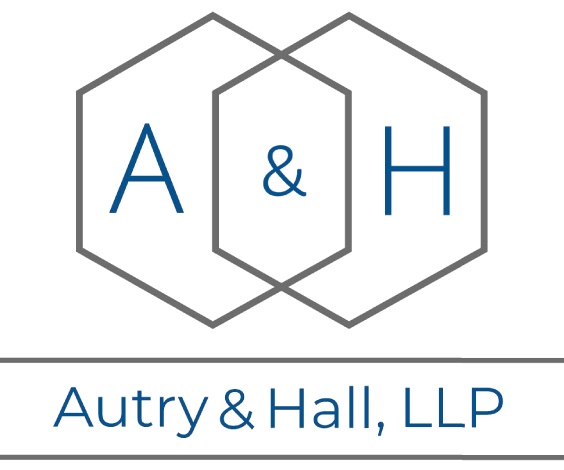Groups interested in forming an organization to serve a specific group or community often consider forming either a cooperative or a 501(c)(3) nonprofit corporation. Both structures support community-oriented goals, but they operate with different frameworks for ownership, funding, taxation, and governance. This post explores the key differences between these two structures and discusses factors to consider when deciding which structure is the best fit.
A. Cooperatives
A cooperative is a member-owned organization that operates for the mutual benefit of its members. Unlike traditional businesses, cooperatives focus on the needs of their members, rather than profits, and are operated on a democratic basis.
Key Features of Cooperatives:
- Democratic Control and Ownership: Members have equal voting rights, regardless of their level of investment. The cooperative is owned by its members.
- Profits: Profits (sometimes called “margins” or “surpluses” by cooperatives) are allocated to members in proportion to their use of the cooperatives.
- Member-Driven Organizations: The primary goal is to serve the needs of the members rather than maximizing profits.
When to Use a Cooperative:
- Primary Focus Is On Serving Members: If your organization is designed to serve its members and be owned by its members, a cooperative is ideal. For example, a purchasing cooperative with contractors as its members would have the primary purpose of obtaining lower prices for supplies needed by the members.
- Collective Ownership: When shared ownership and collective decision-making are central to your mission, a cooperative provides a structured and equitable framework for collaboration.
- Economic Empowerment: Cooperatives are often used to empower marginalized groups, such as workers seeking to take control of their workplace or communities building local wealth.
- Clear Member-Driven Purpose: Cooperatives work best when there’s a clear, shared purpose that aligns with the interests of the members, such as providing affordable housing or marketing local fruits and vegetables.
Examples:
- Food Cooperatives: Community members in an area without affordable fresh produce form a cooperative to purchase organic produce at lower prices and make produce available in the community.
- Worker Cooperatives: Local artists form a cooperative to open a gallery and market their works, and collectively own and manage the cooperative and work in the gallery.
B. 501(c)(3) Corporations
A 501(c)(3) corporation is a nonprofit organization recognized as tax-exempt by the IRS. These organizations must operate exclusively for charitable, educational, religious, scientific, or similar purposes and are prohibited from distributing profits to individuals or private shareholders. Instead, all revenue must be reinvested in the organization’s mission.
Key Features of 501(c)(3) Corporations:
- Tax-Exempt Status: Exemption from federal income tax and eligibility to receive tax-deductible donations.
- Public Interest Focus: Activities must benefit the public, not a specific group of individuals or members.
- Ownership and Governance: Typically governed by a board of directors, ensuring accountability and compliance with legal requirements. The 501(c)(3) does not have “owners,” and any revenues are retained by the organization.
- Fundraising Flexibility: The organization can solicit donations from individuals, corporations, and grants from foundations or government agencies.
- Restrictions: 501(c)(3) organizations are restricted from participating in political campaigns or substantial lobbying. Additionally, they cannot distribute profits to individuals; all income must be reinvested into the mission of the organization. Also, there are restrictions on the business activities that can be conducted by a 501(c)(3) without having to pay taxes on such income or jeopardizing its tax exempt status.
When to Use a 501(c)(3) Corporation:
- Public Good Is the Priority: If your organization’s mission is to serve the public, such as providing educational programs or environmental conservation, a 501(c)(3) is often the best choice.
- Tax Advantages Are Critical: Nonprofits rely heavily on donations and grants, which are incentivized through tax deductibility.
- Grant Eligibility: Many foundations and government agencies require organizations to have 501(c)(3) status to receive funding.
- Profit Distribution Is Not a Goal: Since 501(c)(3) organizations cannot distribute profits to individuals, they are ideal for ventures focused solely on their mission.
Example Scenarios:
- Charitable Organizations: Food banks, homeless shelters, and disaster relief organizations.
- Educational Institutions: Schools, scholarship funds, and after-school programs.
- Environmental Nonprofits: Groups working on conservation, recycling, or climate advocacy.
C. Key Differences
- A cooperative is owned by its members, and members can benefit from the cooperative’s profits. A 501(c)(3) does not have “owners,” and any profits are retained by the organization to further its mission.
- A cooperative can be used to build wealth for its members, while a 501(c)(3) is used to serve the public and cannot distribute profits to individuals.
- A 501(c)(3) is subject to restrictions because of its tax-exempt status, such as restrictions on political activity and the types of business activities that can be conducted. A cooperative is not subject to such restrictions.
- A cooperative may not be eligible to apply for certain grants and loans that are accessible by 501(c)(3) organizations.
- Unlike a cooperative, a 501(c)(3) can receive tax-deductible donations and is tax-exempt.
D. Deciding Which to Choose
When deciding between a cooperative and a 501(c)(3), consider the following questions:
- Who Benefits?
- If the primary beneficiaries are the members themselves, a cooperative is the best choice.
- If your mission serves the broader public, a 501(c)(3) is more appropriate.
- What Is The Revenue Model?
- Cooperatives are funded through membership fees and shared profits.
- 501(c)(3)s typically rely on donations, grants, and other fundraising strategies.
- While 501(c)(3)s have restrictions on the types of business activities they can conduct as a result of their tax-exempt status, cooperatives have no such restrictions.
- How Will Decisions Be Made?
- Cooperatives focus on democratic governance, based on a “one-member, one-vote” model.
- 501(c)(3)s are typically guided by a board of directors, with a focus on accountability to stakeholders.
- Does The Organization Need Tax-Exempt Status?
- If tax-exempt status and grant eligibility are vital, 501(c)(3) status offers significant advantages.
- Cooperatives offer tax advantages, but are not tax-exempt, and may not qualify for certain grants.
E. Conclusion
The decision between a cooperative and a 501(c)(3) corporation depends on your organization’s mission, intended beneficiaries, and operational model. Cooperatives excel at fostering mutual benefit and democratic governance, while 501(c)(3) corporations are ideal for pursuing charitable, educational, or public interest goals with the added benefit of tax-exempt status. By choosing the structure that best supports your organization’s mission, your organization can maximize its impact and ensure long-term success.
For more information about this post’s content, please contact Roland Hall at [email protected].
This post is for informational purposes only and does not constitute legal advice. Viewing this content does not create an attorney-client relationship.

